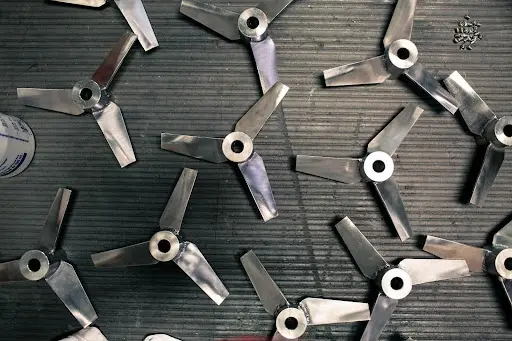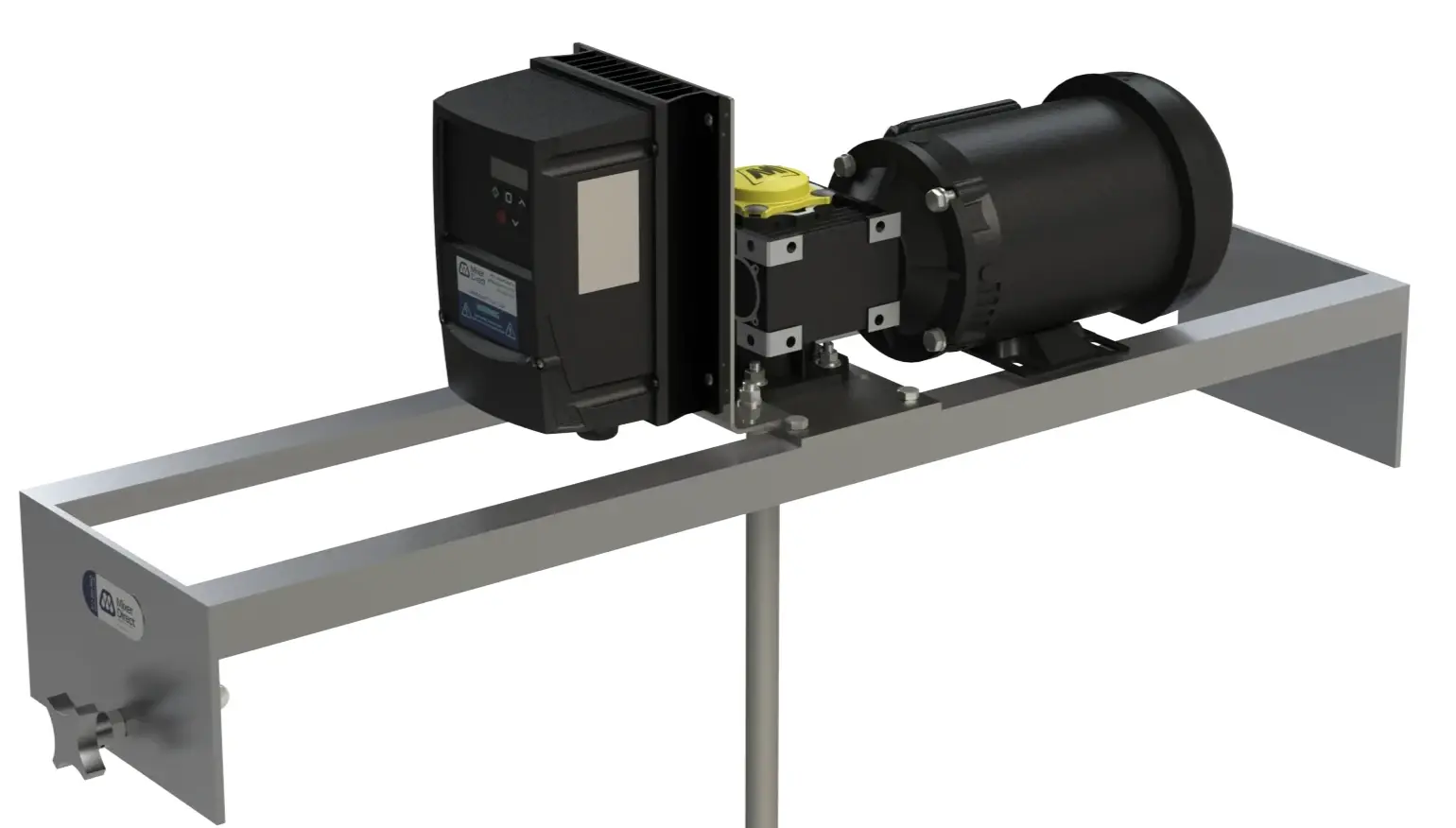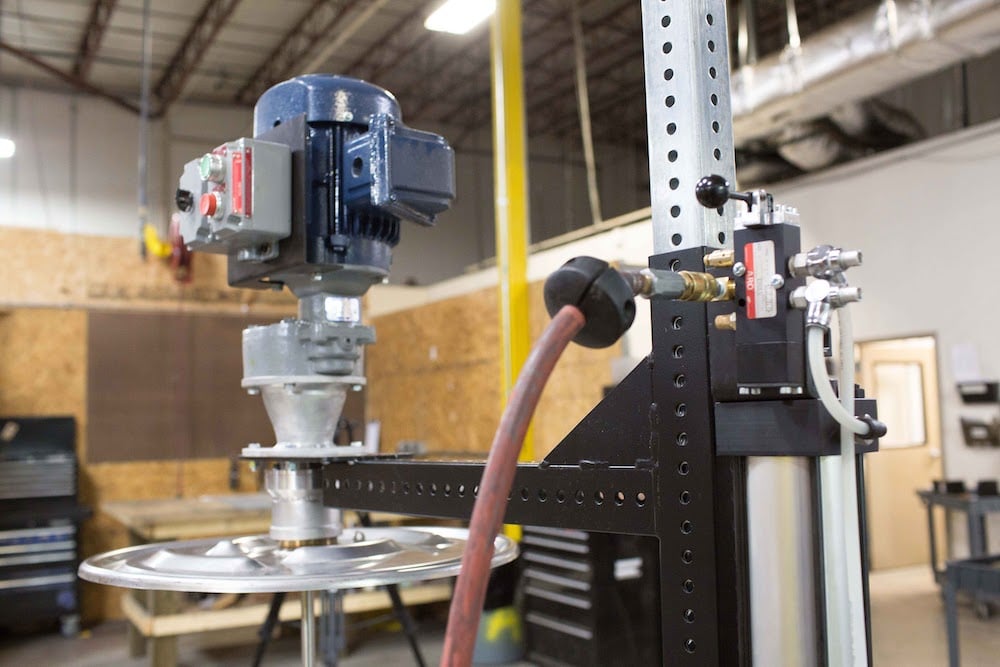Mixing Impellers vs. Propellers: What’s the Difference?
When it comes to mixers, there are several ways to describe the part that actually spins the mixture. There are impellers, propellers, blades, foils,...

Access MXD Process resources including blogs, technical guides, manuals, and maintenance tips—everything you need to optimize, troubleshoot, and expand your process knowledge.
Discover who we are, the industries we serve, and the trusted brands behind our process equipment and environmental solutions. Learn how our team brings precision, innovation, and reliability to every project.
4 min read
MXD Process Dec 30, 2024 11:39:19 AM
Designing an effective mixing system for industrial applications might seem straightforward, but it’s all about finding the right balance—especially between your tank and impeller sizes. That balance is measured by the D/T ratio, where the “D” stands for the diameter of the mixing blade and the “T” stands for the width of the tank.
Why does this matter?
Getting this ratio right can make all the difference in any industrial process involving mixing, whether in chemical production, food manufacturing, or any other process. A poorly designed system can lead to incomplete mixing, vortexing, wasted energy, and production delays.
In this article, we will go over the:
This guide will help you design an efficient, reliable, tailored mixing system. Whether new to mixing systems or looking to fine-tune your current setup, this is your go-to resource for improving your process.
The D/T ratio determines how well your system can achieve uniformity in mixing system design. Here’s why:
Understanding the principles behind D/T ratios can be a game-changer for engineers aiming for consistent and effective mixing results.
The "1/3 rule" is a standard guideline when determining the proper size for your impeller. Ideally, the diameter of your impeller (D) should be one-third the diameter of your tank (T).
For example:
This ratio balances flow and mixing efficiency, ensuring your system generates enough movement to mix substances thoroughly without overloading the motor or creating stagnant zones.
While the 1/3 ratio is ideal, it is not always feasible due to project constraints such as budget, mixing tank design, or available impeller sizes.
Most mixing systems perform well within a D/T ratio of 1/5 to 3/5. Here's what to consider within this range:
You can achieve better performance balance by keeping your ratio within the 1/5 to 3/5 range.
The vertical placement of the impeller within the tank is just as key for the D/T ratio. A poorly positioned impeller can lead to uneven flow patterns and inefficient energy use.
Position your impeller at 1/3 the height of the tank off the bottom.
For example:
This placement ensures the impeller generates consistent flow throughout the tank, preventing materials from settling at the bottom and reducing the likelihood of vortexing or overflowing.
If design constraints prevent you from adhering to the 1/3 rule, consider adding baffles to your tank.
Vortexing is common when an impeller's position causes materials to swirl around the tank's walls rather than mixing vertically. While vortexing can disrupt effective mixing, baffles are a proven solution.
Baffles are long, flat pieces of stainless steel installed along the tank's inner walls. They disrupt circular flow patterns caused by vortexing, forcing the mixture to move upwards and downwards instead. This shift significantly improves vertical flow and overall mixing efficiency.
Baffles should be placed evenly around the tank's perimeter for consistent performance. They should also be strong enough to withstand the tank's operational conditions, such as corrosive materials or high-speed liquid flow.
By pairing baffles with correct impeller placement, you can reduce vortexing and ensure a uniform mixture every time.
Consider the motor once you've determined the appropriate impeller size, placement, and baffles. The motor drives the impeller, so the correct power and speed are needed for consistent performance.
Resource: Explore a motor selection guide or contact the experts at MXD Process to ensure your motor aligns seamlessly.
An effective mixing system doesn’t just happen—it’s carefully planned, considering key design principles like D/T ratios, impeller placement, and motor selection. A strategic approach will save time and resources in the long run, whether optimizing an existing system or designing one from scratch.
If you're facing challenges with your system's configuration, contact MXD Process for expert help and guidance.

When it comes to mixers, there are several ways to describe the part that actually spins the mixture. There are impellers, propellers, blades, foils,...

If your process materials are delivered and stored in Intermediate Bulk Containers (IBCs), you've likely encountered common issues like product...

Once you have your impeller, motor, and shaft you’ll need to mount the mixer to the container or set up a stand where you can lower the mixer in and...